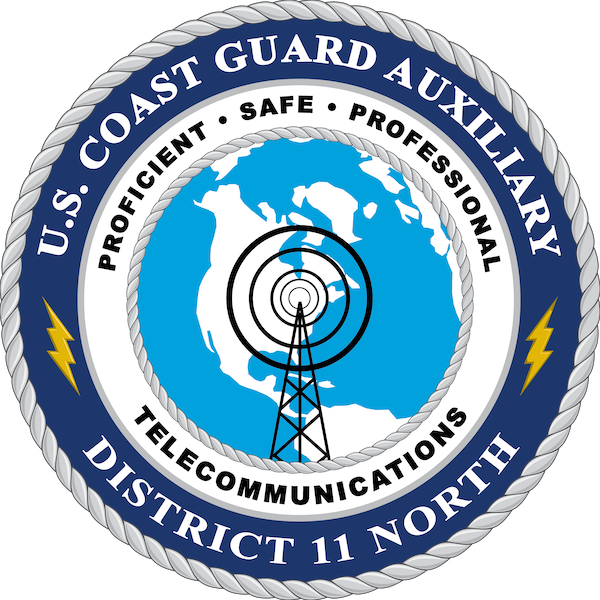Return to District 11NR's Home Page.
|
Auxiliary communications are not bound into a rigidly structured operational system but rather consist of those radio-equipped vessels and aircraft, fixed land stations, land mobile stations and direction finder stations that have been accepted by the Director of the Auxiliary as facilities. The primary purposes of the Auxiliary communications network are:
|

Larry Stanton
DSO-CM |
DSO-CM 2021 Goals
Promote a high level of reliable communications services to the Coast Guard and USCG-AUX using
VHF, HF and digital modes (fixed and mobile).
This goal can be achieved by doing the following:
Long term:
1. Increase number of HF stations in D11N. PCA Fair demonstrations.2.Promote VHF nets in each division, voice and digital modes. When realistic, each division should initiate a VHF net utilizing available frequencies.
Short term:
1.Hold large and small scale communications exercises to enhance training of members.2.Train with gold side communications team. Planned training includes Radio Direction Finding, HF and VHF field training exercises within next 8 months.
|
Respectfully submitted;
DSO-CM, D11NR (916) 687-1512 l [email protected]
|

|
In general, Auxiliarists will operate radio facilities in conjunction with authorized surface and air missions. They will, at that time, use authorized government frequencies.
In order to stand watch at a Coast Guard or an Auxiliary communication facility, a Basically Qualified Auxiliarist must complete either the Auxiliary Communications Specialty Course (or the equivalent) or the Coast Guard Watchstander Qualification Program.
Network Meeting Information
Additional Communications Information
Auxiliary Working Frequencies.
Below are the working frequencies designated in the Eleventh District (NR) for official Auxiliary use. They may be used by Auxiliarists only when conducting SAR, emergency operations, official Coast Guard Auxiliary business, communications, or when directed by competent Coast Guard authority
Channel Frequency.
Use Under orders the working frequency is VHF CH 21A (157.050) with a secondary of VHF CH 16 (156.800). The alternate frequency is VHF CH 83A (157.175)
Effective the end of January 2007 all Coast Guard Auxiliary mobile and fixed land facilities that utilize the repeater system will be transmitting in Narrow Band per the National Telecommunications Policy. The frequency will not be published to the public.
Each qualified communicator will be given the frequencies upon written notification.